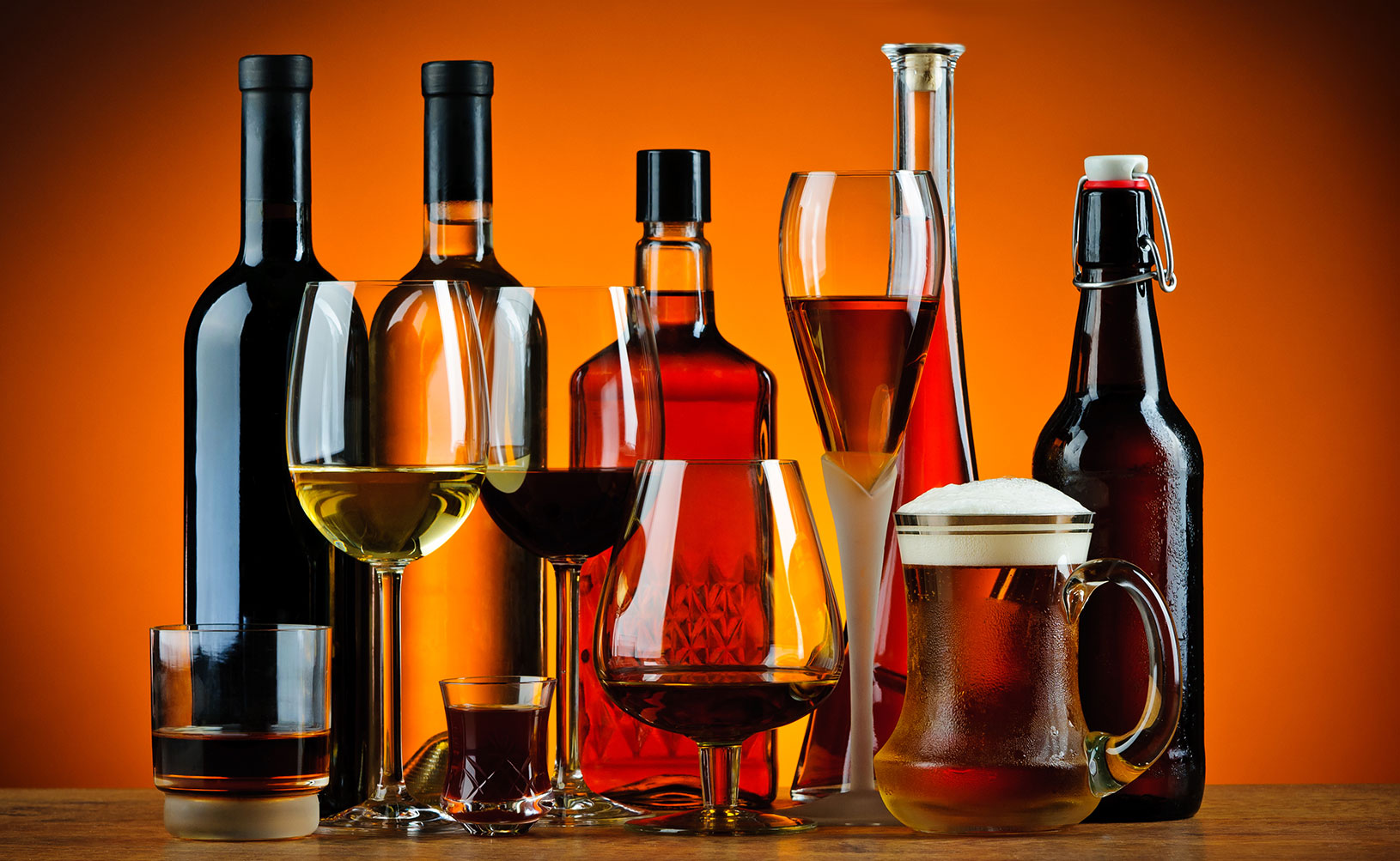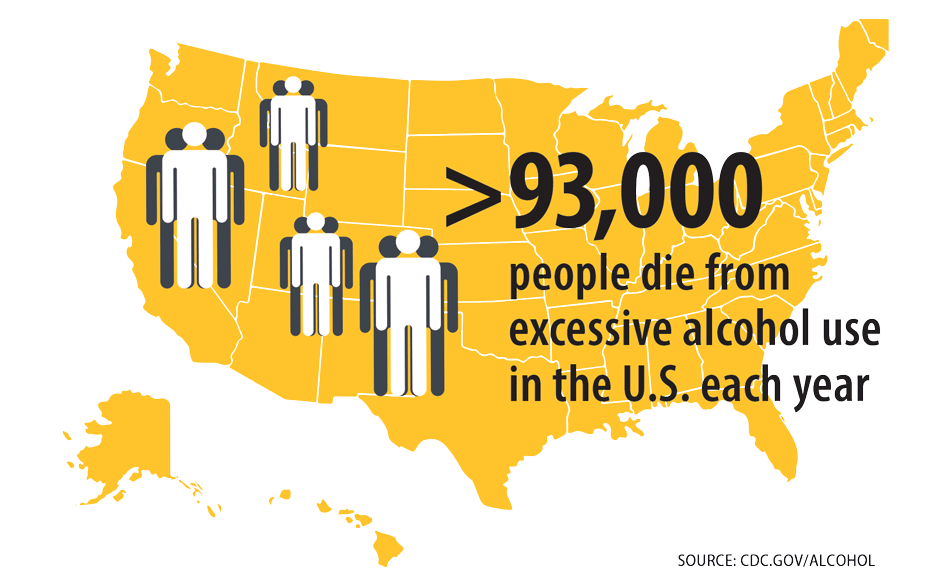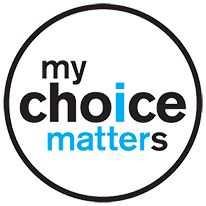KNOW THE FACTS
ALCOHOL

Many people are surprised to learn what counts as a drink. The amount of liquid in your glass, can, or bottle is not necessarily equal to how much alcohol is in your drink. A standard drink is:
- 12 ounces of beer (about 5% alcohol)
- 8 ounces of malt liquor – beer with a high alcohol content (about 7% alcohol)
- 5 ounces of table wine (about 12% alcohol)
- 1.5 ounces (a “shot”) of liquor, like gin, rum, vodka, tequila, or whiskey (about 40% alcohol)
No level of drinking is safe or legal for anyone under age 21 and can be very dangerous.
Brain development continues into your early to mid-20s. During this time, individuals are growing and maturing at a rate much more rapidly relative to other ages. Brain development progresses from the back to the front, with the frontal lobe being the last area of the brain to fully develop during this timeframe. This part of the brain controls executive functions such as impulse control and decision-making. Youth and young adult alcohol use may impact the development of this part of the brain, creating lasting changes that can impact these executive functions as well as increase the risk of future addiction.
- An intoxicated person has a harder time making good decisions.
- A person is less aware that his/her behavior may be inappropriate or risky.
- A person may be more likely to engage in risky behavior, including drinking and driving, sexual activity (like unprotected sex) and aggressive or violent behavior.
- A person is less likely to recognize potential danger.
Research shows that drinking during the teen years could interfere with normal brain development and change the brain in ways that:
- Have negative effects on information processing and learning.
- Increase the risk of developing an alcohol use disorder later in life
Adolescents who drink are at a greater risk of a broad range of psychological and physical problems in adulthood. These include:
- Alcohol abuse/dependence. Evidence indicates that any drinking during adolescence increases the chance of developing a drinking problem in early adulthood, and the earlier someone starts drinking, the greater the risk.
- Depression and other mental illnesses. Young people who suffer from mental illnesses are more likely to use alcohol to help them cope. While alcohol can make people feel better in the short term, heavy drinking can make these problems worse.
- Social problems. Abuse of alcohol is associated with dropping out of school, unemployment and social isolation.
- Physical health problems. Persistent heavy drinking can produce a range of physical health problems, including liver disease and brain damage.
People who drink are affected even before they show signs of being drunk, especially when it comes to decision-making abilities.
At first, alcohol causes people to feel upbeat and excited. But this is temporary and they shouldn’t be fooled.
If drinking continues, the effects on the body—and the potential risks—multiply. Here’s what can happen:
- Inhibitions and memory: People may say and do things that they will regret later, or possibly not remember at all. Inhibitions are lost - leading to poor decision making.
- Decision-making skills: When they drink, individuals are more likely to be impulsive. They may be at greater risk for having an alcohol-related traffic crash, getting into fights, or making unwise decisions about sex.
- Coordination and physical control: When drinking leads to loss of balance, slurred speech, and blurred vision, even normal activities can become more dangerous.
- Death: Drinking too much alcohol can also lead to death. If people drink too much, they will eventually get sleepy and pass out. Reflexes like gagging and breathing can be suppressed. That means they could vomit and choke, or stop breathing completely.
And finally, it’s easy to misjudge how long alcohol’s effects last. Alcohol continues to affect the brain and body long after the last drink has been finished. Even after someone stops drinking, alcohol in the stomach and intestine continues to enter the bloodstream, impairing judgment and coordination for hours.
There are increased risks and a range of negative consequences related to underage drinking. It is dangerous because it:
- Causes many deaths.
On average, alcohol plays a role in the deaths of 4,358 young people under age 21 every year. These deaths include: - 1,580 deaths from car crashes
- 1,269 from murders
- 245 from alcohol poisoning, falls, burns, and drowning
- 492 from suicides
- Causes many injuries.
Drinking alcohol can cause young people to have accidents and get hurt. In 2011 alone, about 188,000 people under age 21 visited an emergency room for injuries related to drinking alcohol. - Increases the risk of physical and sexual assault.
Young people under age 21 who drink are more likely to carry out or be the victim of a physical or sexual assault after drinking than others their age who do not drink. - Can lead to other problems.
Drinking can cause teens to have trouble in school or with the law. Teens who drink are more likely to use other drugs than teens who don’t. - Can lead to developing an alcohol use disorder.
Alcohol Use Disorders (AUDs) are medical conditions that doctors diagnose when someone’s drinking causes them distress or harm. In 2014 about 679,000 young people ages 12-17 had an AUD. Even more important, the younger the use of alcohol the more likely one is to develop an AUD later in life. - Increases the risk of cancer.
Drinking alcohol increases your risk of developing various cancers, including cancers of the mouth, esophagus, pharynx, larynx, liver, and breast.
Alcohol
According to the National Institute on Alcohol Abuse and Alcoholism (NIAAA), more than 86% of all people above the age of 18 have had a drink at some point in their lives, with more than 65% of that same group reporting drinking within the month prior to surveying. As a substance that has been around for centuries and that is so commonly consumed, alcohol is associated with a robust list of slang terms and colloquialisms.
The following list is a sample of terms used to reference alcohol:
- Booze
- Juice
- Liquid courage
- Giggle juice
- Giggle water
- Shooter (a shot)
- Cold one (beer)
- Suitcase (30 pack of beer)
- Jungle Juice
Alcohol Mixed with other Drugs
Mixing alcohol and other intoxicating substances can be dangerous. Alcohol may be consumed in an attempt to enhance or prolong the effects of some drugs; however, doing so can result in potentially severe side effects, such as slowed breathing, decreased heart rate, and even death.
A few slang terms for alcoholic drinks mixed with other substances include:
- Drug cocktail
- Smoothie
- Time flip: alcohol + benzodiazepines (e.g.,
- Xanax)
- Herb and Al: Alcohol + weed
- Snow-coning: Alcohol + cocaine
- Tipsy flip: Alcohol + ecstasy
- Getting crunk: Alcohol + weed
- Robo-fizzing: alcohol + cold medicine
- Brompton cocktail: Alcohol + an opioid + cocaine
Slang for Drunk
Just as there are slang terms for alcohol and alcoholic beverages, there are many slang terms for being intoxicated/drunk.
- Hammered
- Tanked
- Wasted
- Plastered
- Juiced-up
- Fried
- Loaded
- Blasted
- Skunked
- Steamed
- Toasted
- Buzzed
- Sloshed
- Wrecked
- Basted (high and drunk at the same time)
- Green out (alcohol and marijuana used together)


